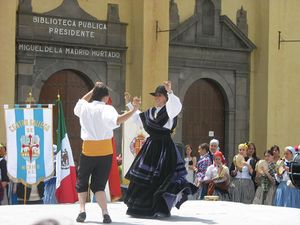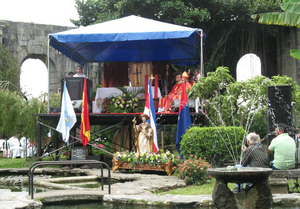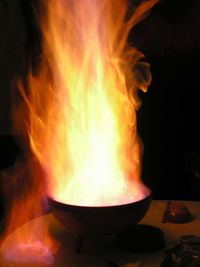جليقيون
جليقيون (جليقية: [Galegos] Error: {{Lang}}: text has italic markup (help))، هم مجموعة عرقية وقومية استوطنت تاريخا في جليقية شمال غرب إسپانيا. معظم الجليقيين ثنائي اللغة، ويتحدثون لغتهم التاريخية، الجليقية والقشتالية الإسپانية.
. . . . . . . . . . . . . . . . . . . . . . . . . . . . . . . . . . . . . . . . . . . . . . . . . . . . . . . . . . . . . . . . . . . . . . . . . . . . . . . . . . . . . . . . . . . . . . . . . . . . . . . . . . . . . . . . . . . . . . . . . . . . . . . . . . . . . . . . . . . . . . . . . . . . . . . . . . . . . . . . . . . . . . . .
الجغرافيا والديموغرافيا
التقسيمات السياسية والادارية
منطقة الحكم الذاتي (مفهوم تأسس حسب الدستور الإسپاني لعام 1978) والذي يعرف بالجليقية باسم (a) Comunidade Autónoma Galega، وباسم (la) Comunidad Autónoma Gallega in بالإسپانية (ويعني: منطقة جليقية ذاتية الحكم)، ويتكون من أربع مقاطعات إسپانية؛ لا كورونيا، لوگو، اورنسه، وپونتبدرا.
تقع المناطق الأخرى المتحدثة باللغة الجليقية في مقاطعة منطقة أستورياس ذاتية الحكم؛ وليون، وزامورا في منطقة قشتالة وليون، وفي شمال البرتغال.[2]
السكان، المدن الرئيسية، واللغات
The official Statistical body of Galicia is the Instituto Galego de Estatística (IGE). According to the IGE, Galicia's total population in 2008 was 2,783,100 (1,138,474 in A Coruña,[3] 355.406 in Lugo,[4] 336.002 in Ourense,[5] and 953.218 in Pontevedra[6]). The most important cities in this region, which serve as the provinces' administrative centres, are Vigo, Pontevedra (in Pontevedra), Santiago de Compostela, A Coruña, Ferrol (in A Coruña), Lugo (in Lugo), and Ourense (in Ourense). The official languages are Galician and Spanish. Knowledge of Spanish is compulsory according to the Spanish constitution and virtually universal. Knowledge of Galician, after declining for many years owing to the pressure of Spanish and official persecution, is again on the rise due to favorable official language policies and popular support. Currently about 82% of Galicia's population can speak Galician[7] and about 61% has it as a mother tongue.[8]
الجينات الوراثية للسكان
إن ت دنا
| N | E-M35 | E-M78 | E-M81 | G | I | J1 | J2 | K | R1b |
| 88 | 1.14% | 6.82% | 9.09% | 5.68% | 10.23% | 1.14% | 6.82% | 1.14% | 57.95% |
إم تي دنا
| N | H | U(xU6) | T | J | K | V | X | L | W | U6 | N | R | I |
| 282 | 47.52% | 13.83% | 9.22% | 8.16% | 6.38% | 4.61% | 2.48% | 2.48% | 1.42% | 1.06% | 1.06% | 1.06% | 0.71% |
اللغة الجليقية
اللغة الجليقية، هي لغة رومانسية غرب آيبيرية، تستخدم في جليقية (جاليسيا)، إسبانيا، وتستخدم أيضاً في أنحاء أخرى من إسبانيا والبرتغال. عدد المتحدثين باللغة هو 3 إلى 4 ملايين شخص، نصف مليون منهم هم المهاجرين المنتشرين في أمريكا الجنوبية وأوروبا. وتعتبر لغة رسمية في إسبانيا.
اللغة الجليقية يستخدمها أكثر من 3 ملايين شخص، من بينهم أغلب سكان جليقية، والجليقيين الساكنيين في المدن الإسبانية الأخرى كمدريد وبرشلونة. وفي أوروبا: أندورا، وجنيف، ولندن. وفي أمريكا الآيبيرية: بوينس آيرس، ومونتيفيديو، وهافانا.
الثقافة والمجتمع
الثقافة والمناظر الطبيعية
Galicia's cultural heritage is characterized by its extensive, abundant and varied geography. Indeed, the entire region could be considered as a sort of museum that never closes its doors to the public.
Galicia was entirely immersed in the Megalithic Culture, common to other areas of Atlantic Europe. Galician cultural elements can be traced back to the Bronze Age (Celtic) civilization known as Castro Culture. It also boasts a wealth of Roman remains, highlights of which include the Walls of Lugo, declared a World Heritage Site, as well as the Tower of Hercules in A Coruña. The Way of St James has also been acknowledged by UNESCO, as has Galicia's capital, Santiago de Compostela, declared a World Heritage City in 1985.
More than 30,000 centers of population make up a decidedly humanised land and landscape. These settlements are home to magnificent examples of the Galician people's architectural and ethnographic heritage. Stone crosses, raised granaries and shrines, etc., are all fine examples of the traditional constructions to be found in this land.
الهجرة

Like other Iberian regions, Galicia's history has been defined by mass emigration. There was significant Galician emigration in the 19th and early 20th centuries to other parts of Spain, Portugal, and to the American continent.
Unlike the Basque and the Catalan regions which were rich, urbanized, and industrialized, Galicia remained relatively poor, agricultural village society, as industry, and apart from ship building, large scale industry had yet to make its appearance. Moreover, its agricultural sector continued to be among the most backward in Spain, and farm productivity was severely hampered by the tiny size of the individual farmsteads known as minifundios. The minifundio was the product of an attempt to distribute land plots in a closed rural system to a growing population by requiring that equal shares be bequeathed to each heir. After just a few generations, the land had been subdivided so much that most of the plots were too small to support a family or to be economically viable. On the positive side, the system ensured that there were relatively few who were completely without means and the rich seas and large fishing industry provided alternative sources for a living.
For these reasons, Galicia was a net exporter of population to the rest of Spain. Between 1900 and 1981, the net outflow of people from Galicia was more than 825,000. In fact, the city with the second greatest number of Galician people is بوينس آيرس, Argentina, where immigration from Galicia was so massive that all Spaniards are now known as gallegos (Galicians). During the Franco years, there was a new wave of emigration out of Galicia to other European countries, most notably to France, Switzerland, Germany and the United Kingdom.
. . . . . . . . . . . . . . . . . . . . . . . . . . . . . . . . . . . . . . . . . . . . . . . . . . . . . . . . . . . . . . . . . . . . . . . . . . . . . . . . . . . . . . . . . . . . . . . . . . . . . . . . . . . . . . . . . . . . . . . . . . . . . . . . . . . . . . . . . . . . . . . . . . . . . . . . . . . . . . . . . . . . . . . .
المطبخ الجليقي
Galician cuisine refers to the typical dishes and ingredients found in the cuisine of the Galicia region of Spain. These include shellfish and fish, many pork-related dishes (chourizos, zorza, botelo, androlla), empanadas, torta de Santiago (cake of Santiago), polbo á feira (a dish made of octopus), the cheese queixo de tetilla, the ribeiro and albariño wines, and orujo liquor. In Galician cuisine, the freshness and quality of the produce are paramount.
Potatoes are nowadays a staple of Galician cooking; however potato crops only started to be widespread in Galicia as late as the 18th century. Potatoes supplanted the ancient use of chestnuts in many Galician dishes such as the popular caldo galego (Galician vegetable soup). Another innovation was the widespread use of olive oil from the 19th century on which replaced the older use of pork tallow.
Some taboos of Galician cooking are the wide disregard for most mushrooms (with some exceptions) and some mollusks such as snails.
In Galicia, a wide variety of sea produce can be found in traditional dishes due to the province's long shoreline and traditional fishing economy. Agriculture products such as potatoes, maize, and wheat are also a staple in the Galician diet, along with dairy and meat products from animals such as cows, sheep and pigs; Galicia's grasses and shrubs are green year-round and are excellent for grazing. Historically, rye was the most traditional cereal crop in Galicia.
الديانة
غالبية الجليقيين (حوالي 80%) من الروم الكاثوليك وأقلية صغيرة من السكان يعتنقون المذهب البروتستنتي، وجزء قليل من الأقلية بلا ديانة.
القومية والتاريخ
تتألف القومية الجليقية التي ظهرت في العقد 1840، من الجليقانية– recalled the "العصر الذهبي" في مملكة جليقية, حيث لعبت دورا بارزا في سياسة أيبريا في العصور الوسطى. That was the time when the northern half of Galicia was hemmed in and isolated while the southern portion expanded southward in the wake of the Moors' withdrawal. This southern part of the realm eventually became Portugal.
مستقبل الثقافة الجليقية
مشاهير جليقيو الأصل
- انظر قائمة الجليقيين
This article contains material from the Library of Congress Country Studies, which are United States government publications in the public domain.
هوامش
- ^ أ ب ت ث ج ح خ د ذ ر ز س ش ص ض ط Censo electoral de galegos residentes no estranxeiro a 1 de abril de 2008, segundo país de residencia e provincia de inscrición
- ^ Galician in Ethnologue
- ^ [1:0];9912:15&S= A Coruña province 2008 census
- ^ [1:0];9912:27&S= Lugo province census 2008
- ^ [1:0];9912:32&S= Ourense province census 2008
- ^ [1:0];9912:36&S= Pontevedra province census 2008
- ^ Knowledge of Galician language 2003
- ^ Use of Galician language 2003
انظر أيضا
- أمم قلطية
- تاريخ جليقية
- خط زمني لتاريخ جليقية
- قومية جليقية
- طريق سانت جيمس
- سانتياگو ده كومپوستلا
- Fillos de Galicia
- قوميات إسپانيا
- إسپان
وصلات خارجية
- Galician Portal
- A collaborative study of the EDNAP group regarding Y-chromosome binary polymorphism analysis
- Galician language portal
- Galician Music, Culture and History
- Galician Government
- Galician History and Language
- Galician History
- Santiago Tourism
- Page about The Way of St James
- Oficial page about The Way of St James






